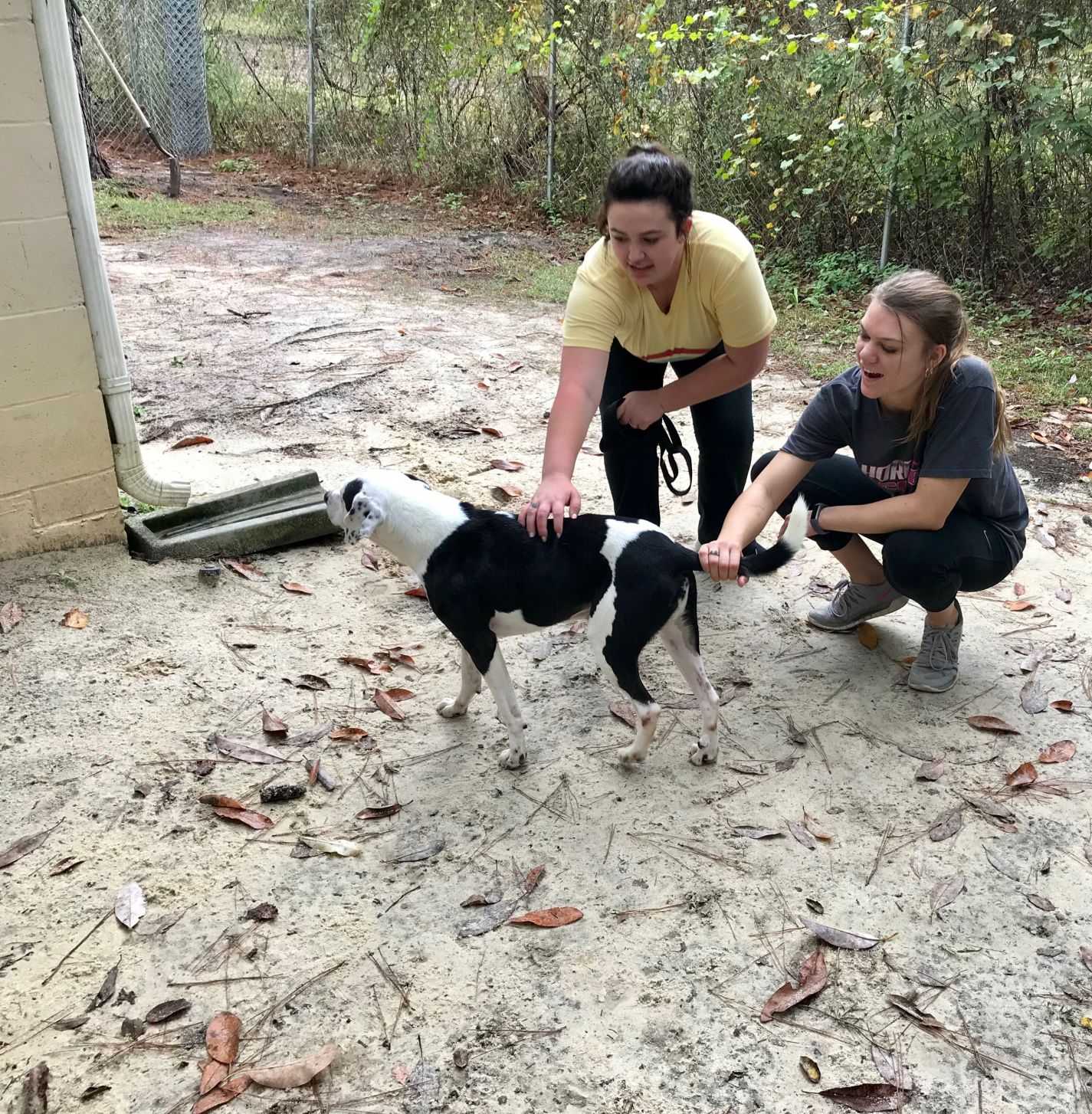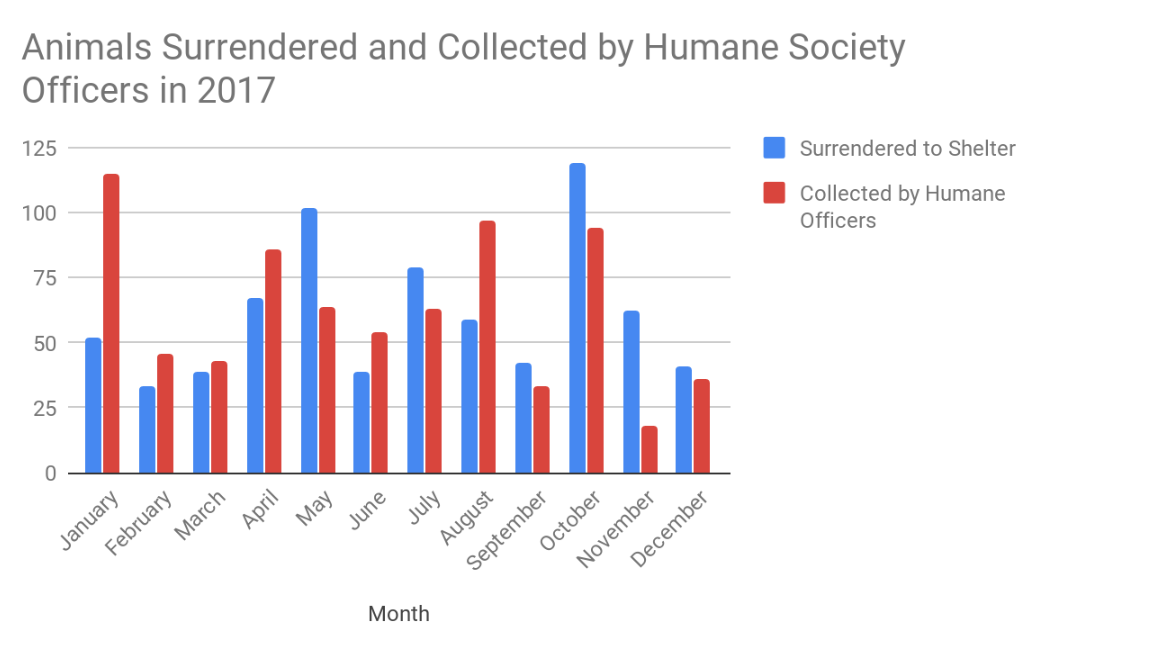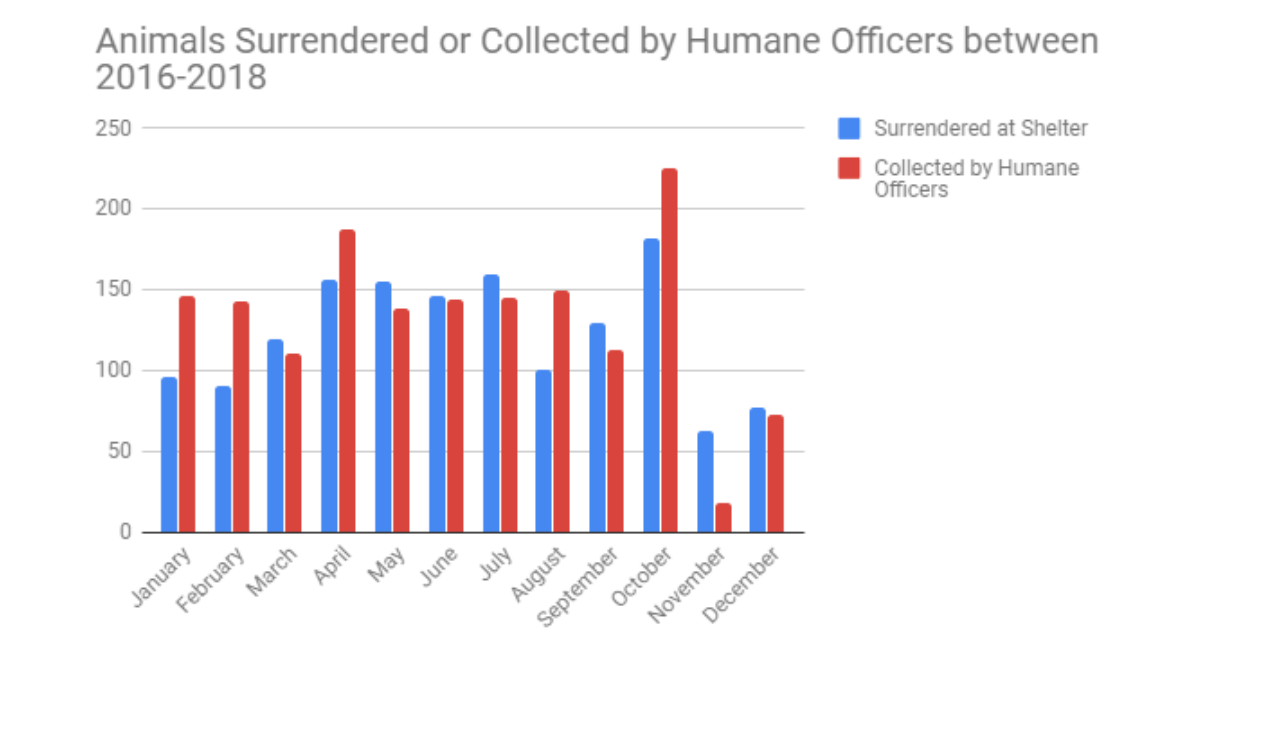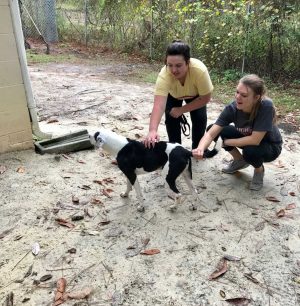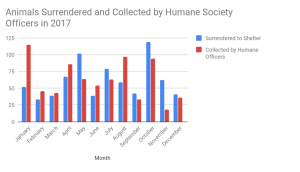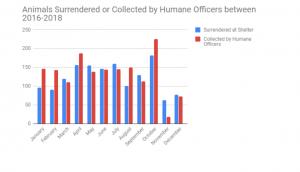Bulloch County Animal Shelter: A haven for abandoned animals
November 15, 2018
Many college students are abandoning their pets, especially after they move away.
Outside of the building, you can hear them. They bark constantly, going into a crescendo from soft, little cries to loud, bellowing screams.
Inside, though, it’s calm. On one side, there is a tall, gray cage where two kittens are looking curiously at bystanders. Next to the counter, people are waiting in line. Some are adopting, some are returning and some are picking up.
This is normal for the Bulloch County Animal Shelter.
The BCAS is a kill shelter located in the middle of nowhere, and when trying to find it, you almost always miss it. Trees and shrubbery cover the sign that lets people know where they are.
The current shelter has 30 kennels for cats that are ready to be adopted, 18 for cats in isolation, 24 kennels for dogs that are ready to be adopted and 24 kennels for dogs in isolation. Isolation can mean that they are sick or cannot be around other animals.
The shelter also uses its older shelter facility to house any of the animals that are considered to be sick or aggressive. Animals that are involved in court cases are also placed in these areas.
Most of the time, animals are coming and going from the shelter. Some even return after being adopted.
Abandonment of Animals
In fact, one of the biggest problems is the fact that so many animals that are adopted from the shelter are either abandoned or returned to the shelter sometime later.
Michelle Barrett, who is the kennel tech supervisor at BCAS, explains that although the number of college students versus residents returning animals to the shelter is about the same, she sees that many college students are actually abandoning their animals.
“But it’s like being a college town,” Barrett said. “I know we deal with it. I know other shelters deal with it. They want them while they’re here, but their parents don’t want them to bring them home, or they have animals at home, or they have animals at home that don’t get along with the new animals and that kind of thing.”
There is an option for people to return their pets to the animal shelter, which is $15 if it is not a litter of animals.
There are many reasons as to why college students might abandon a pet. One of the main reasons is that they can’t take them home to their parent’s house after they graduate or they are not allowed in their apartment or home.
The BCAS knows that many of these animals are abandoned because shelter officials see that the animals have been well-fed but have no owner to claim them. That and the animals are found around apartment complexes and dorm areas where many students live.
Strays Found around Dormitories and Apartment Complexes
Dormitories on campus do not permit animals unless under special circumstances, such as emotional support animals or service animals. Apartment complexes, on the other hand, can charge an upfront fee and then a monthly fee in order to have a pet.
Over the years, Statesboro has also experienced a problem with an overpopulation of stray cats roaming around in Statesboro, which has led to an increase in euthanizations.
This is not just an issue at Georgia Southern University, but also at other universities, such as with the University of Georgia. According to an article published in the school’s paper, The Red and Black, there is a rising amount of stray cats roaming around campus, especially in the months of January and May.
According to data obtained from reports in the Statesboro Herald, since 2016, October had the highest number of surrenders and strays. However, not all the information was updated as regularly for the data for all months of the year and not as frequently in some months as others.
In 2016, for example, no data could be found in March or in November, and in 2018, no data could be found for the months of June, July, November and December. The year 2017 did have all of their information updated for each month, and in that year alone, the amount of strays collected by humane society officers was the highest in January with 115.
Volunteering at the Shelter
However, if people are wanting to play with animals, but are not allowed to have them or cannot afford them, they can volunteer at the shelter to help socialize with the animals so that they can get adopted.
“It’s always so nice to see so many different people who have something in common and love animals, and they wanna come here and help out,” Katherine Barrs, volunteer coordinator at the Bulloch County Animal Shelter, said.
Abigail Shelly, a sophomore psychology major who has been volunteering at the shelter for the past two months, has seen many college students returning animals to the shelter.
“On each kennel, there’s an ID card that the breed of dog, their age and their reason for being in the shelter. Lots of them are personal surrenders,” Shelly said. “I’ve seen two dogs being taken by college students and then returned several weeks later.”
Despite this, Barrett says that BCAS will do everything it can to ensure that all animals can be saved.
Barrett said, “Honestly, I just think because it’s not fair to them to have to come back. It’s not fair to them to get adopted and live in a wonderful home and be loved on by you and your friends and then move back home, and it can’t go home with you.”
Tara Bailey, The George-Anne Enterprise Reporter, gaspecial@georgiasouthern.edu


